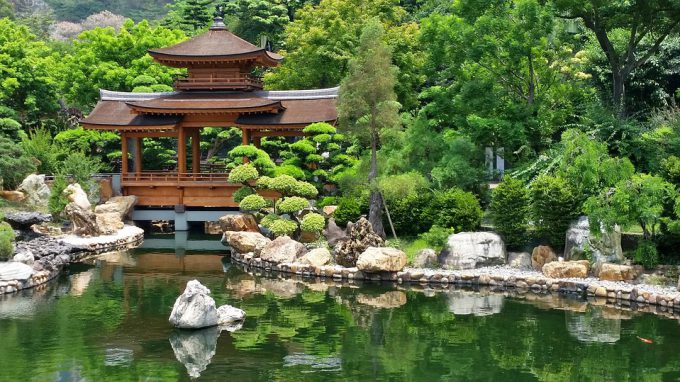
Not everyone can have a Japanese Tea Garden outside of their home, with its drum Bridge and five elemental stone lanterns. – And the Hayward Japanese Gardens in the Bay Area may be small (only a measly 1.2 acres), but they’re still bigger than most home lots in San Francisco. San Mateo’s Japanese Garden is modest, but still, its miniature landscape would overflow from your backyard into the streets of Glenn Park.
Many are fascinated by Japanese gardens such as those described above, and why not? Pagodas overlook places of serenity: peaceful landscapes that can’t help but embrace the natural world wherever it’s located. But what creates that atmosphere that seems to be in almost every Asian-inspired garden, no matter how big or small?
Let’s look at some of the features of an Asian garden, specifically, a Japanese garden. As you come up with ideas, remember that you aren’t trying to recreate and authentic Japanese garden; you’re trying to recreate the feeling of peace and serenity.
Scenery Within the Japanese Landscape
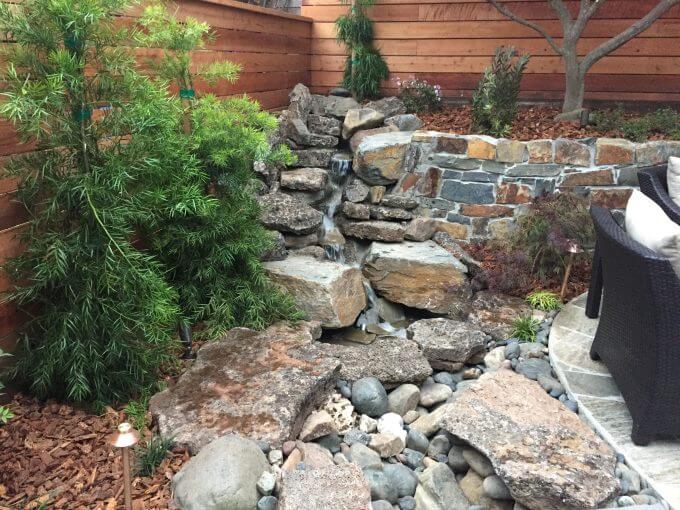
Japanese gardens are more than a bunch of plants from Japan. You can’t just throw a few drought tolerant plants with a few stones and call it call it good. Some consider bridges over koi ponds, with a few Japanese lanterns as a Japanese Garden design. While it may have the elements used, but ultimately these are meant to create a scene, a feeling, a mood. For example, the large, smooth boulders might represent mountains, while the ponds would represent the ocean.
These gardens are carefully crafted, and always with a “less is more” mentality. One might lean down, pick up a hand-sized pebble and realize that the pebble was the last piece to ruin the serenity of the scene. Removal of the pebble could mean the declaration of the finished project.
Stones
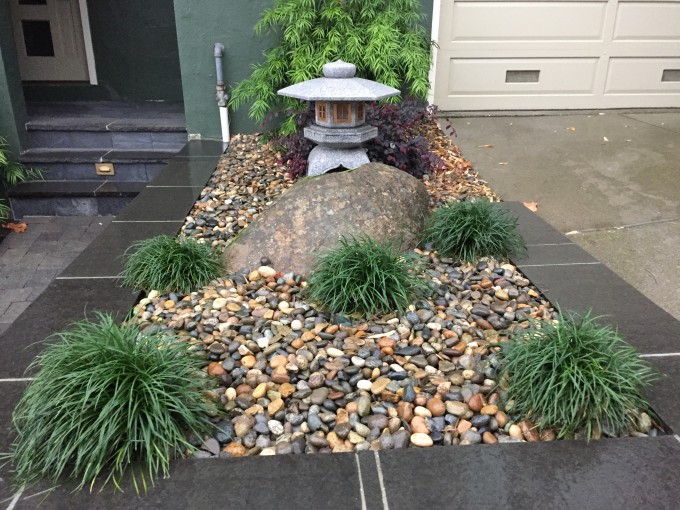
Speaking of stones, you’ll find that many Japanese gardens include them. They’re often the anchor of the garden, reaching down into the earth as a symbol of duration. As mentioned above, they can be used to relieve the landscape of “only” greenery, or “only” sand, as they reach up above the ground line to create hills, valleys and character.
It’s hard to tell whether the size and style of the garden dictates the stone used or vice versa, but the two (garden and stone) influence each other. Often, stones are laid out as male and female contrast, in pairs, and in careful spaces in the garden.
Water
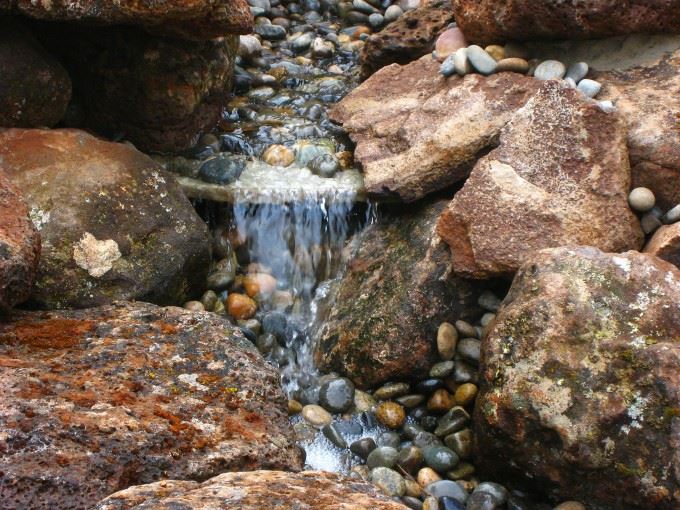
Matsuo Bashō
Water has a special place in the heart of the Japanese garden designer. Symbolizing renewal and continuity, the quiet trickle of a small water flow has the magical properties of damping down background noise, somehow closing the area off from the outside world. Clear, circulating water has the added benefit of helping to keep the air fresh in the summer, and a few carp swimming around – living flowers – brighten the landscape.
Bridges
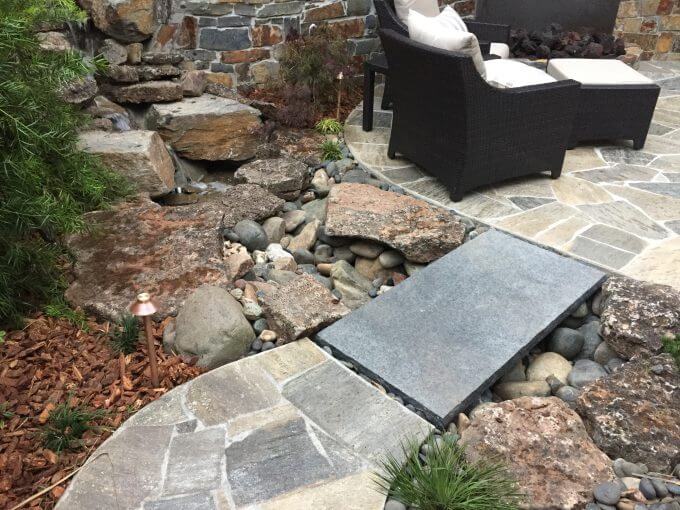
Bridges give a person the ability to stop and linger over the beauty of the landscape from an elevated position. Shape and material are less important than that the bridge remain in harmony with the natural surroundings.
While a bridge may not make sense in your Asian-inspired garden, there are various ways the element can be incorporated. A small bamboo step over a miniature koi pond, for example.
Lanterns
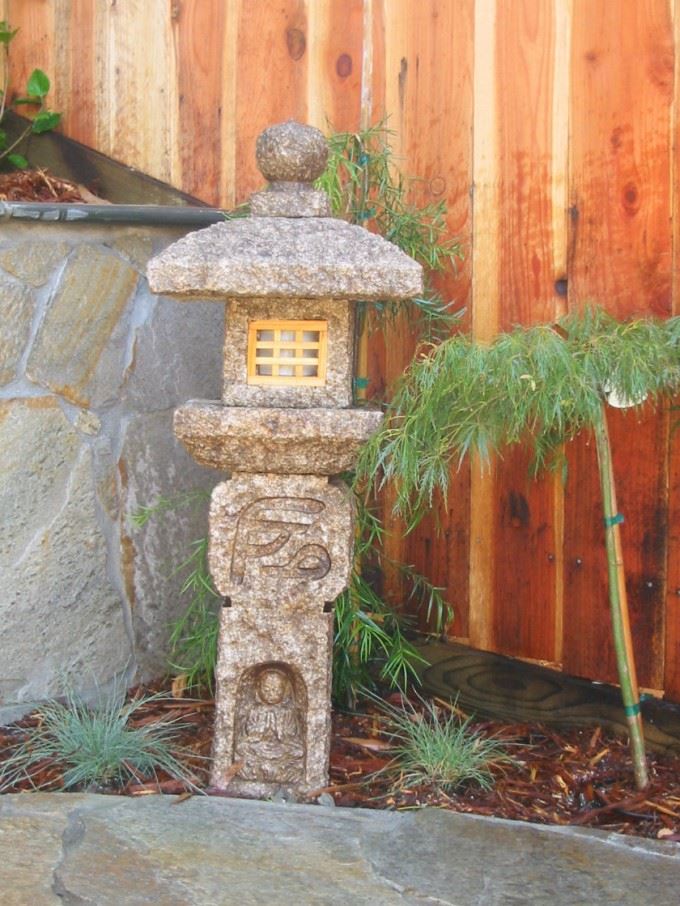
Providing light during late night entertaining hours and the beauty of carved stone during the daylight, lanterns are often used in Japanese gardens. Architecturally, it stands out from the natural elements of the garden, while also being a part of it.
Plants
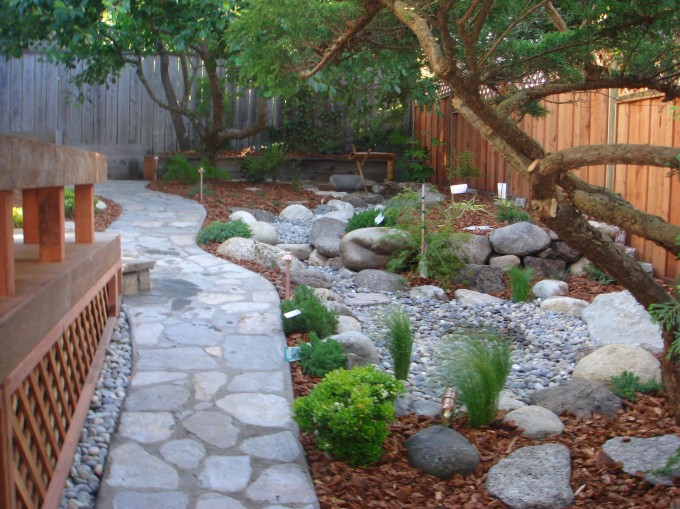
While water can sometimes be replaced by gravel or sand, as in the case of a Zen garden, plants are always a necessity, and the right plants make all the difference. Plants and flowers are an outward expression of the landscape designer; as each plant is produced and grows, an elaborate symbolism starts to manifest.
The Carefully Cultivated Japanese Garden
As you think about what you’d like to have in your Japanese garden, remember that these gardens are carefully crafted. Things like how the sun sets or rises on the landscape are taken into account, as to bring the best light on each feature. It’s gardening feng shui to the next level.
An Asian-inspired garden is more than the sum of its parts; its created by seeing how each individual part interacts peacefully with the rest. No clashing bright flowers or jarring landscapes. It’s the bonsai of the garden world, carefully cultivated to bring a sense of peace, beauty and serenity to all who pass by.
If you’d like to turn your landscape into a Japanese garden, or need help adding an Asian flare to your space, contact Tamate Landscaping. We specialize in creating beautiful outdoor spaces with Asian flavor.









Leave a Comment
Let us know your thoughts on this post but remember to place nicely folks!